Cachaça, Caipirinhas & Beyond - Find. Eat. Drink.
Cachaca, Cachaça, Caipirinha, Cocktail, Brazil, Brazilian, World Cup, What to drink, Traditional, Drinks, Pros, Leblon Cachaça, Founder Steve Luttmann, Avuá Cachaça, Pete Nevenglosky, Artisanal, Aged, Un-Aged, Distillate, Sugar Cane, Sugar, Lime, Glassware, How To Drink, What Is It, The Best Cachaca for Caipirinha, Bartenders, Distillery, Small Production, Drink What The Pros Drink













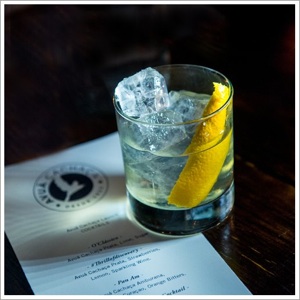
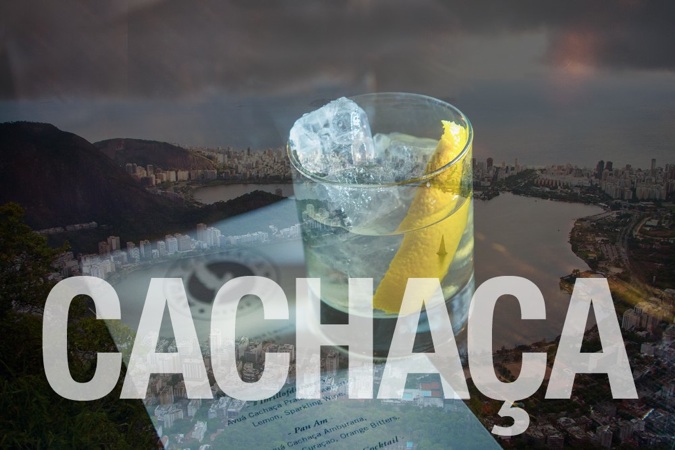
Cachaça is the national spirit of Brazil and the caipirinha made with cachaça is the national cocktail. To get the full cachaça lowdown we chatted with Pete Nevenglosky, the co-founder of Avuá Cachaça, and Steve Luttmann, the founder of Leblon Cachaça. They are both Americans with a passion for the Brazilian spirit who founded artisanal cachaça brands.
Discover what makes cachaça unique, how to make a true classic caipirinha and what fruits make amazing caipirinha variations. Go beyond the caipirihna to see how versatile cachaça can be.
June 12, 2014
Cachaca, Caipirinhas & Beyond
A Guide to Cachaça with Tips from two Cachaça Producers

Share




Photographs courtesy of Avua Cachaça & David DiRienz

Cocktail Recipes
The Classic Caipirinha
Cocktail recipe by Pete Nevenglosky of Avuá Cachaça & Steve Luttmann of Leblon Cachaça
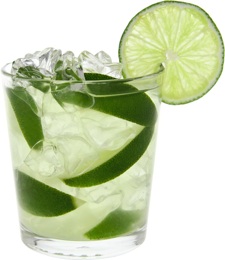
Serves 1
Glass: Caipirinha / Short Old Fashioned / Rocks Glass
Ice: Crushed Ice
Garnish: Lime Wheel
Ingredients
- 2 oz cachaça (Avuá or Leblon)
- 1/2 lime
- 2 teaspoons Demerara sugar
Directions
1) Trim the top of the lime (where the lime attached to the tree) to remove some of the bitter pith.
2) Cut the lime half length-wise into four wedges and trim the center white pith.
3) Put the wedges in a caipirinha glass (a shorter Old Fashioned glass) and add two teaspoons of Demerara sugar.
4) Muddle the limes and the sugar (see notes below on muddling tips).
5) Add crushed ice to fill the glass.
6) Pour in 2 ounces of cachaça and either stir for 15 seconds (per Steve) or shake (per Pete).
7) Garnish with a lime wheel.
Notes
- Don’t expect the sugar to dissolve. Brazilians like the texture of the sugar in their caipirinhas.
- Limes: the quantity of lime depends on the juiciness of the lime being used. Try and find limes with smooth skin and more weight to them.
- Pete’s Muddling Tips: “Don’t over muddle it. Give it three simple muddles with a big strong, sturdy muddler.”
- Steve’s Muddling Tips: “Muddle for 15 to 30 seconds to extract most of the lime juice, but don’t over do it and extract the bitter elements from the peel.
Share

General Information

Avuá Cachaça
Website | Buy It | More Recipes
Leblon Cachaça
Website | Buy It | More Recipes
“How To Be a Brazilian”
Buy From: Amazon.com

Cachaça | The Technical Stuff
Cachaça (ka-SHAH-sa) -- at its basic level, Brazil’s national spirit is simply distilled sugarcane juice. Brazilian law dictates that it has to have an alcohol content of 38 to 54% by volume and beyond that there are a couple of ways to further categorize cachaça: industrial vs. artisanal, unaged vs. aged.
Distant Cousins | Cachaça & Rum
From a production standpoint, there are some similarities between how rum and cachaça are both made. Cachaça can only be distilled from fermented sugarcane juice and may be unaged and aged, whereas rum can be distilled from sugarcane juice, molasses, or a mixture of both. But that’s where the similarities end.
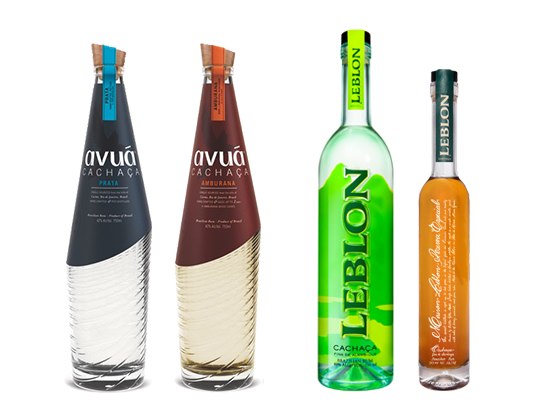
Avua Cachaça bottles which are influenced by the design of Oscar Niemeyer | Leblon Cachaças
Artisanal vs. Industrial
The important difference between industrial and artisanal cachaça is how the sugarcane is farmed and handled and how the fermented juice is distilled. For industrial (meaning much larger scale production) cachaça, the importance is speed and continuous production. To support this the canes are typically burned and pressed, chemicals may be used to expedite fermentation of the juice and column stills are used for distilling. The end result is a more crude, rougher cachaça. As Steve Luttmann notes, “It has a lot of impurities in it and it’s very raw and it bites.” It also explains the headache from too many caipirinhas.
In the production of artisanal cachaça, the sugarcanes are hand-harvested and the urgency is getting the cut canes pressed. “It is extremely important how quickly you harvest the cane and press the cane,” says Pete Nevenglosky. “The purity of the product in the end really comes from hand-cutting the cane and almost immediately pressing it within hours.”
Not all artisanal cachaça is produced using the exact same approach though. The unaged Leblon for example, is blended across batches and is stored in Cognac casks for six weeks to round it out. Whereas the Avuá Prata is bottled each growing season (meaning no blending) and spends time in stainless steel tanks before bottling. These approaches create nuance differences in the resulting flavors of the cachaça.
Unaged vs. Aged
Unaged cachaça is clear and is bottled after resting for about 6 months after distillation. Aged cachaça is stored in wood barrels for an extended period of time, which varies depending on the producer. There are a variety of woods used in the aging process. Avuá’s aged cachaça, Amburana, gets its name from aging in Brazilian Amburana wood. Pete describes it as, “a potent wood that gives these really unique notes that are very different from what you get in a cachaça aged in oak barrels.” Leblon’s Reserva bottling is aged for two years in oak casks brought over from Cognac in France. As with Scotch, Bourbon, and Cognac the wood-aging mellows the spirit, adds complexity and makes them worth enjoying neat or on the rocks. Depending on the bottle, you may pick up notes of baking spice, nutmeg, caramel, and honey.
The Flavors
Unaged artisanal cachaças show bright, floral, grassy, fresh fruit flavors which is why they work well in spring and summer drinks. To fully appreciate the flavors of cachaça, try some neat or with a simple twist of lime. The aged cachaças take on notes from the barrel aging and work well across all seasons.
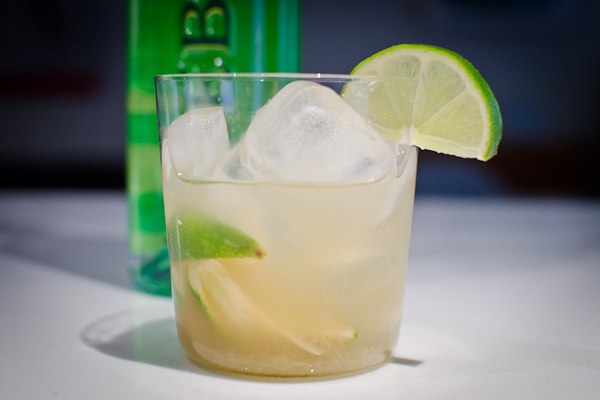
A Leblon Caipirinha
Photo Credit: Find. Eat. Drink.
Caipirinha | The National Cocktail
When it comes to the caipirinha (kai-pur-EEN-ya), Brazilians have a saying: “Quanto pior a cachaça, melhor a caipirinha.” -- translation: the worse (meaning cheaper) the cachaça, the better the caipirinha.
Is it “better” to use a large production cachaça or an artisanal cachaça in the national drink of Brazil? The best way to settle this is try it for yourself. Buy a bottle of Avuá or Leblon and a bottle of Pitú (the one with the shrimp on the label) or 51, which are Brazil’s largest two brands of cachaça and do a taste test. The bottom line is that if you are the type of person who specifies the gin or vodka when you order a G & T at a bar, you might enjoy an artisanal cachaça.
Ingredients & Equipment
All you need to make the classic caipirinha is cachaça, sugar, limes, ice, a muddler, and a glass. Seems simple, right? Not so fast... there are always questions. What type of sugar? How to cut the limes? Which muddler? What size ice? Which glass? Shake or stir?
The Dance Of Balance
As with any cocktail, balance is the key, but it becomes more accentuated when you only have three simple ingredients. As Pete recommends, you want the true essence of the spirit to come through, so avoid over sugaring and citrusing.
Classic Recipes | Slice, Sweeten, Muddle, Pour
Both Pete and Steve have very similar classic caipirinha recipes:
1) Take a half a lime and trim the top (where the lime attached to the tree) to remove some of the bitter pith. [Note: the quantity of lime depends on the juiciness of the lime being used. Try and find limes with smooth skin and more weight to them.]
2) Cut the half lime length-wise and trim the center white pith.
3) Put the wedges in a caipirinha glass (a shorter Old Fashioned glass), add two teaspoons of Demerara sugar and muddle.
4) Pete’s tips: “Don’t over muddle it. Give it three simple muddles with a big strong, sturdy muddler.” Steve has a slightly different approach: muddle for 15 to 30 seconds to extract most of the lime juice, but don’t over do it and extract the bitter elements from the peel.
5) Add crushed ice to fill the glass.
6) Pour in 2 ounces of cachaça. Pete likes to shake, Steve likes to stir for 15 seconds or so.
In Brazil, they don’t use a jigger to measure the drink because the glasses are specific caipirinha glasses and the right amount of cachaça fills the glass with ice. They traditionally also stir the caipirinha rather than shake it.
Sugar
“If you are in Brazil, you are going to see and taste the sugar texturally,” notes Pete. Both Pete and Steve recommend using Demerara sugar for both the flavor profile and the texture, but you can also use regular white sugar. Steve says, “the sugar granules pull out some of the zest in the rind, which gives it a nice aroma.”
If you aren’t into sugar as a textural component, use superfine sugar that will dissolve. No Brazilian would use a liquid sugar, but simple syrup could be used to remove all trace of sugar crystals and agave nectar or honey can provide a more unique twist.
More Recipes
Pete also uses Sasha Petraske’s recipe and as Sasha tells it, he got the recipe from an ancient Brazilian bartender. His version is called the O’Clássico and uses a sugar cube and simple syrup (see the recipe below).
Another variation is made at Anvil Bar & Refuge in Houston, TX. They make a Salted Caipirihna using preserved, salted limes and both granulated and turbinado sugar syrup.
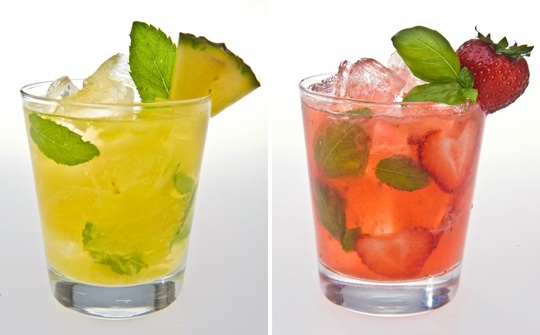
The Pineapple and Mint Caipirinha + The Strawberry Basil Caipirinha
Photographs courtesy of Leblon Cachaça
Caipirinha | The Variations
When it comes to variations on the caipirinha, the Brazilians love fruit. If you are in Brazil, Steve recommends trying the graviola (or soursop) which has a flavor profile combination of strawberry and pineapple with some citrus notes. He also loves passionfruit, guava, pineapple, and caju, which is the fruit of the cashew tree. “Brazilians always tend to pair their pineapple with mint.” See the recipe below for the Pineapple & Mint Caipirinha.
Substituting Cachaça?
You might be tempted to trade out the cachaça for another spirit in your caipirinha, but technically, it’s no longer a caipirinha. Rum = caipirissima, vodka = caipirosca, Italian grappa = grapirinha, Japanese sake = sakerinha or sakquêrinha.


Cocktails | Beyond The Caipirinha
The caipirinha might be the national drink of Brazil, but don’t limit your cachaça experience to just one cocktail. Sip it neat, add some rocks, try cachaça as a alternative in a classic cocktail, or create something new. Aged cachaças make for a delightful Old Fashioned and Manhattan; or you could go the Italian route and use unaged cachaça in a Negroni twist.
Two cocktails that scream summer are the Ginger Blazer from Aisha Sharpe (from Leblon) and the Brazilian Old Maid by Sasha Petraske (from Avuá). The Ginger Blazer has cachaça, thyme, apple juice, simple syrup, lemon juice and ginger and the Old Maid combines cachaça, lime juice, simple syrup, mint, and cucumber. See the recipes below.
Try more cocktail recipes created for Leblon and Avuá.

NYC Brazilian Recs
Download the F.E.D. iPhone app and get Pete Nevenglosky and Steve Luttmann’s favorite NYC spots for Brazilian food and caipirinhas, as well as more recommendations from chefs, bartenders, sommeliers, and food artisans.
Twitter


Follow us on Twitter

O’Clássico
Cocktail recipe courtesy of Avuá Cachaça created by Sasha Petraske
Yield
Serves 1
Glass: Caipirinha / Short Old Fashioned / Rocks Glass
Ice: Ice Cubes
Garnish: Lime Wedge
Ingredients
- 2 oz Avuá Cachaça Prata
- 4 lime wedges
- 1 sugar cube
- 0.75 oz simple syrup
Directions
1) Muddle lime wedges and sugars in the glass.
2) Add ice cubes to fill the glass.
3) Pour in 2 ounces of cachaça and shake.
4) Garnish with a lime wedge.

Pineapple & Mint Caipirinha
Cocktail recipe courtesy of Leblon Cachaça
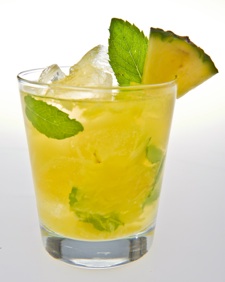
Serves 1
Glass: Caipirinha / Short Old Fashioned / Rocks Glass
Ice: Ice Cubes
Garnish: Pineapple Wedge, Mint Leaf
Ingredients
- 2 oz Leblon Cachaça
- 4 chunks of pineapple
- 2 mint leaves, torn
- 2 teaspoons superfine sugar or 1 oz simple syrup
Directions
1) Muddle the pineapple, mint, and sugar in a shaker.
2) Fill the shaker with ice and add Leblon Cachaça.
3) Shake vigorously.
4) Serve in a rocks glass and garnish with a pineapple wedge and mint leaf.

Ginger Blazer
Cocktail recipe courtesy of Leblon Cachaça, created by Aisha Sharpe
Yield
Serves 1
Glass: Caipirinha / Short Old Fashioned / Rocks Glass
Ice: Ice Cubes
Garnish: Thyme Sprig
Ingredients
- 2 oz Leblon Cachaça
- 6 thyme sprigs
- 1.5 oz apple juice
- 0.75 oz simple syrup
- 0.5 oz fresh lemon juice
- 1 slice of fresh ginger or a dash of ginger liqueur
Directions
1) Muddle the thyme, ginger, and simple syrup in a shaker.
2) Add ice, apple juice, lemon juice, and Leblon Cachaça.
3) Shake well and strain into a rocks glass over fresh ice.
4) Garnish with a sprig of thyme.

Brazilian Old Maid
Cocktail recipe courtesy of Avuá Cachaça, created by Sasha Petraske
Yield
Serves 1
Glass: Caipirinha / Short Old Fashioned / Rocks Glass
Ice: Ice Cubes
Garnish: Lime Wedge
Ingredients
- 2 oz Avuá Cachaça Prata
- 1 oz lime juice
- 0.75 oz simple syrup
- 4 to 6 mint leaves
- 3 slices cucumber
Directions
1) Add ingredients into a shaker.
2) Add ice cubes and shake well.
3) Dump into a rock glass and garnish with a lime wedge.







